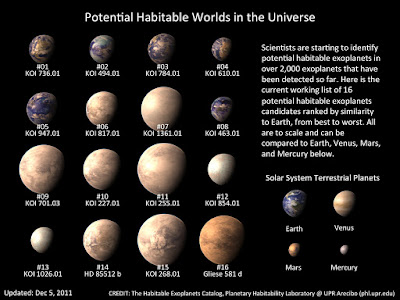In Poul Anderson, Genesis (New York, 2001), Part One, VII, the reigning intelligence on an extra-solar planet incorporates the Christian Brannock upload, which no longer wants to function as a distinct entity, whereas, in Part Two, I, in another planetary system, the primary aspect of the local node's primary consciousness synthesizes a lesser manifestation of itself which it then releases into separate existence as a second entity and a small facet of that second entity comes from Brannock.
The omniscient narrator, who usually remains in the background unnoticed, instead directly addresses the reader by saying, e.g.:
"Let us make our myth concerning the mission to Earth." (p. 103)
It is a "myth":
that the primary aspect and its manifestations were identified by names - Alpha and Wayfarer;
that they conversed before Wayfarer became a distinct entity;
indeed, that they were already distinguishable individuals capable of any conversation at that stage.
The system is that of an M2 dwarf star about fifty parsecs from Sol. Long ago, an artificial intelligence stopped there to study life on one of the planets. Now the star is orbited not only by planets but also by "...various titanic structures..." (p. 105), resembling gossamer or spiderwebs. The structures are mostly force fields which:
gather and focus energy for Alpha;
study space and the atom;
transmit and receive interstellar messages;
contain Alpha and Wayfarer although not at any specific location - just as consciousness is not located at any Cartesian point in an organic brain?
Alpha is the apex of the structural complexity.
Wayfarer departs in a spaceship containing:
cryomagnetics supporting antimatter;
a matrix with backup for the Wayfarer programs and a database;
sensors, effectors and bodies into which Wayfarer can download an essence of himself;
equipment, instruments and power systems;
a guitar for Brannock.
Saturday 30 September 2017
GENESIS: Environments II
See GENESIS: Environments.
The Christian Brannock upload visits the reigning intelligence of this planetary system. The island-dwelling intelligence can be described on three levels.
What A Human Being Would Perceive
Lightnings and rainbows around a huge, many-faceted jewel;
low domes and high pylons;
the sound of invisible energies.
What Brannock Perceives
We are told only that:
his sensors detect more than human sense organs would;
he notices changes since his last visit, unsurprising because the reigning intelligence is always changing itself, often on the basis of advice from intelligences in other systems.
Intangible And Incomprehensible Even To Brannock
Force fields;
quantum computations;
"...actions far down in the foundations of reality." (p. 87)
How far down? Can the nodes go all the way down? One view in the philosophy of science is that scientific theories can approach but never reach ultimate reality whereas another view is that a Theory of Everything would:
be formulable in a single equation that could be printed on T-shirts;
describe the most fundamental properties of the most fundamental entities, whatever those are;
unify the forces of nature;
explain the already formulated laws of physics and chemistry.
Can the nodes act upon the most fundamental entities?
The Christian Brannock upload visits the reigning intelligence of this planetary system. The island-dwelling intelligence can be described on three levels.
What A Human Being Would Perceive
Lightnings and rainbows around a huge, many-faceted jewel;
low domes and high pylons;
the sound of invisible energies.
What Brannock Perceives
We are told only that:
his sensors detect more than human sense organs would;
he notices changes since his last visit, unsurprising because the reigning intelligence is always changing itself, often on the basis of advice from intelligences in other systems.
Intangible And Incomprehensible Even To Brannock
Force fields;
quantum computations;
"...actions far down in the foundations of reality." (p. 87)
How far down? Can the nodes go all the way down? One view in the philosophy of science is that scientific theories can approach but never reach ultimate reality whereas another view is that a Theory of Everything would:
be formulable in a single equation that could be printed on T-shirts;
describe the most fundamental properties of the most fundamental entities, whatever those are;
unify the forces of nature;
explain the already formulated laws of physics and chemistry.
Can the nodes act upon the most fundamental entities?
GENESIS: Environments
Poul Anderson, Genesis (New York, 2001), Part One, VII.
A planet is so far from Earth that Sol is not visible in its night sky;
the day sky is green with red-tinged clouds;
the atmosphere is humanly unbreathable;
the planet's sun is small and dazzling;
low hills are covered with primitive life - purple, ruddy and gold mats, stalks, fluttering membranes and spongy turrets;
Intelligence Prime has studied this life and transmitted information to other intelligences across the known galaxy for seven hundred years;
the furthest intelligence have not yet received the transmissions.
See also:
The Christian Brannock Uploads
Genesis, Part One, Chapter VII
Van Rijn And Brannock
The Christian Brannock Uploads II
A planet is so far from Earth that Sol is not visible in its night sky;
the day sky is green with red-tinged clouds;
the atmosphere is humanly unbreathable;
the planet's sun is small and dazzling;
low hills are covered with primitive life - purple, ruddy and gold mats, stalks, fluttering membranes and spongy turrets;
Intelligence Prime has studied this life and transmitted information to other intelligences across the known galaxy for seven hundred years;
the furthest intelligence have not yet received the transmissions.
See also:
The Christian Brannock Uploads
Genesis, Part One, Chapter VII
Van Rijn And Brannock
The Christian Brannock Uploads II
Subscribe to:
Posts (Atom)


